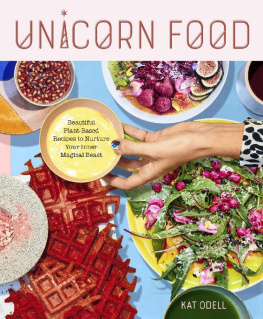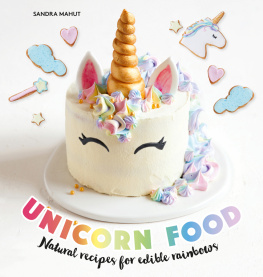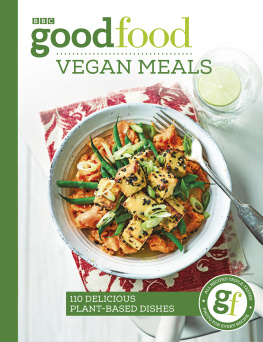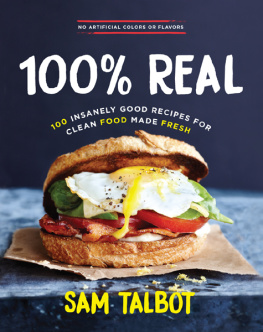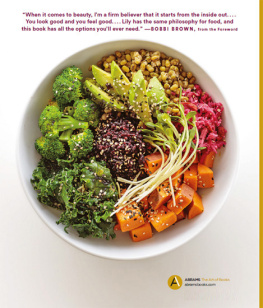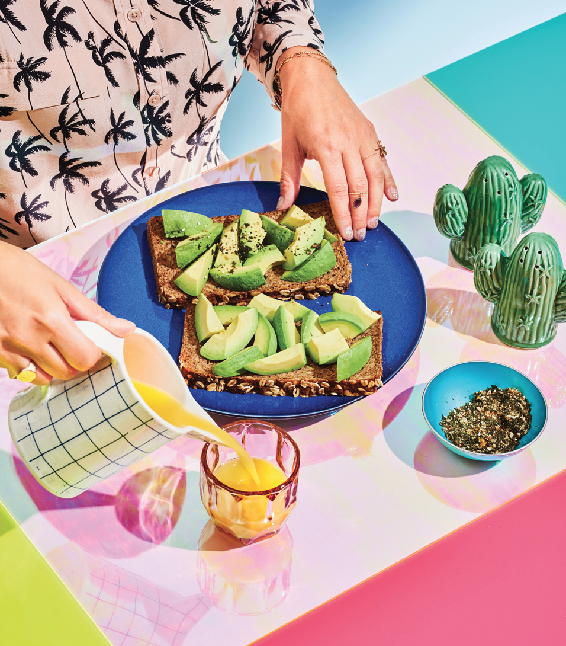
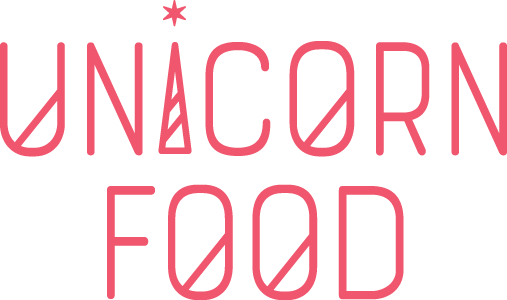
Beautiful Plant-Based Recipes to Nurture Your Inner Magical Beast
Kat Odell
Workman Publishing New York

To my family
Mom, Dad, Peter, Olive, and Tiger.
Mom and Dad
Thank you for always making me try everything once.


Contents
From medicinal mushrooms and Chinese herbs to gluten-free flours and healthy sweeteners and fats, here youll find all the essential info on the basics used to build a unicorn pantry. While some ingredients may sound unusual, theyre all actually very simple to source.
This chapter is dedicated to simple, delicious nut milks and other beverages that use these alternative milks and other healthful liquids as their base. From hot to cold, sweet to savory, these good-for-you refreshments are a great start to any morning or can be consumed as an afternoon snack. Think of this chapter as a jumping-off pointmany of the foods that come later in this book incorporate these delicately flavored, wholesome milks.
Why not eat brunch foods all day, every day? Especially when these dishes are inspired by Australian caf culture, where healthy sweet and savory dishesfrom Hazelnut-Mocha Overnight Oats (page 57) to Sweet + Sour Rainbow Radish Tacos (page 88)are enjoyed from a.m. to p.m.
Bonus Mini-Chapter!
It can be challenging to avoid food wastean issue faced by many home cooks. In my own kitchen, I try to cook with all parts of any given ingredient, like repurposing the almond pulp left over from making almond milk, and finding a way to make palatable those tough stems you remove when cooking with kale. This chapter showcases a few ideas for deliciously reusing these traditionally discarded ingredients.
For those times when you feel a little peckish or crave a treat, the recipes in this chapter include sweet things and snacky things that you can eat without feeling guilty. For desserts that means adding sweeteners like fruit, honey, maple syrup, and coconut palm sugar, and for snacks that means using healthy, naturally satisfying ingredients like veggies, whole grains, and seeds as a base.
The beauty of condiments is that they can easily elevate simple dishes. Make a few in advance, like the Black Honey Tahini (page 160), which is amazing on chia pudding (see page 56) or as a dip for dried fruit, or the Pastrami Spice (page 173), which gives a savory meatiness to roasted veggies and avocado toast. Keep them on hand for a quick flavor boost!

Introduction
What Is Unicorn Food?
I am not great at yoga, I dont own a dehydrator, and Ive never been to Burning Man. I moved from New York City to Los Angeles after college, calling myself an Angeleno for close to eight years before returning to my home city for work. Truth of the matter is, I deeply miss the West Coast and the sunny, relaxed LA lifestyle. So, I decided to bring what I could back to New York.
One of the greatest parts about living in Los Angeles was the access to fresh ingredients, whether sourced from any one of the citys ubiquitous farmers markets or from the healthy market Erewhon. Suffice it to say, it was easy to be lazy and still eat a super-healthy diet while living in Los Angeles. But then I moved to New York... and all that changed. No more fresh duck eggs, no more strawberries in December, and worst of allno more handmade almond milk. Thats when I decided to make my own.
I first experimented with homemade almond milk on a whim while living back in LA. I dont have any medical dietary restrictions that would prevent me from drinking dairy milk, rather, I just prefer the taste of a vanilla beanenhanced, rich glass of almond milk. And after having one too many highly addicting almond milkbased smoothies at my local wellness eatery, Caf Gratitude in Venice Beach, I decided to figure out how to make my own. What I quickly found was that homemade almond milk is not just incredibly simple to make, but it outshines anything youll find at a restaurant or in a refrigerator case. And likewise I found that the occasional bloating I experienced after drinking cows milk never happened when I subbed in a nut-based alternative.
Since my move back to New York, Ive been re-creating Southern California in my kitchen by making a range of alt-milks (almond, cashew, pine nut, coconut, hazelnut, pistachio to name a few) in various hues, colored with natural, health-boosting ingredients such as spirulina (seaweed), matcha (antioxidant-rich green tea powder), turmeric, and more. I got so swept up in milk mania that I decided to start a nut milk business, and after partnering with a friend to host a pop-up at her restaurant, Mimi Chengs in New Yorks East Village, I realized I had to name my product. One day, I looked at the rainbow of milks I had created: pink, purple, yellow, orange, blue, green. The milks were colored with ingredients straight from nature, and likewise fortified with myriad good-for-you properties. Its like natures magic, I thought. I started thinking about fun, colorful, somewhat magical things, and the word unicorn came to mind. And thats when it hit me: My healthy rainbow of milks should be called Unicorn Milk.
From Unicorn Milk to Unicorn Food
Unicorn Milk has since morphed into Unicorn Foodwhere I use many of my milks as ingredients to build an array of foods both sweet and savory. But I should backtrack for a moment. In 2014, I decided to change the way I eat. I didnt want to follow a diet per se, but instead listen to my body about the foods that made me feel good and those that made me feel bad. I eliminated most gluten from my diet (I am not totally gluten-free by any meansif theres a slice of Paulie Gees pizza on the table, Ill likely eat it), deciding not to cook with it or keep gluten-containing ingredients at home. Likewise, I cut down on white refined sugar. Theres zero nutritional value in that stuff, and study after study pegs sugar as our mortal enemy, linking it to numerous diseases. Ditching sugar was a tough one because I have a major sweet tooth, so instead of eliminating it entirely, I switched over to natural, more nutrient-dense sweeteners with a lower glycemic index like coconut palm sugar, raw honey, dates, and maple syrup. This is also how I became an accidental almost-vegan. What I mean by that is, my job requires being an omnivore; when dining at a restaurant, I will try anything on the menu. But at home, I eat a primarily vegan diet (though I do enjoy honey and bee pollen). I didnt set out to do this. It really was an accident. One day I realized that I mostly ate vegetables, fruit, nuts, and seeds and used coconut butter as a cooking fat. I dont buy products marketed to vegans (so much of whats out there is overprocessed), I just eat a vegetable-heavy diet and skip the dairy. And thats how Unicorn Milk led me to Unicorn Food!
Almost Vegan
The foods I eat at homeand the recipes in this bookare almost vegan. That is, theyre heavy on the veggies and exclude all animal products with the exception of honey and bee pollen. Although most traditional vegans eschew those ingredients (since they are insect-made), as someone who eats vegan-ish primarily for the health benefits, I have no problem with them; theyre filled with antioxidants and other healthful compounds. If you would rather avoid them, you can almost always swap them out for the sweetener of your choice.
Next page
